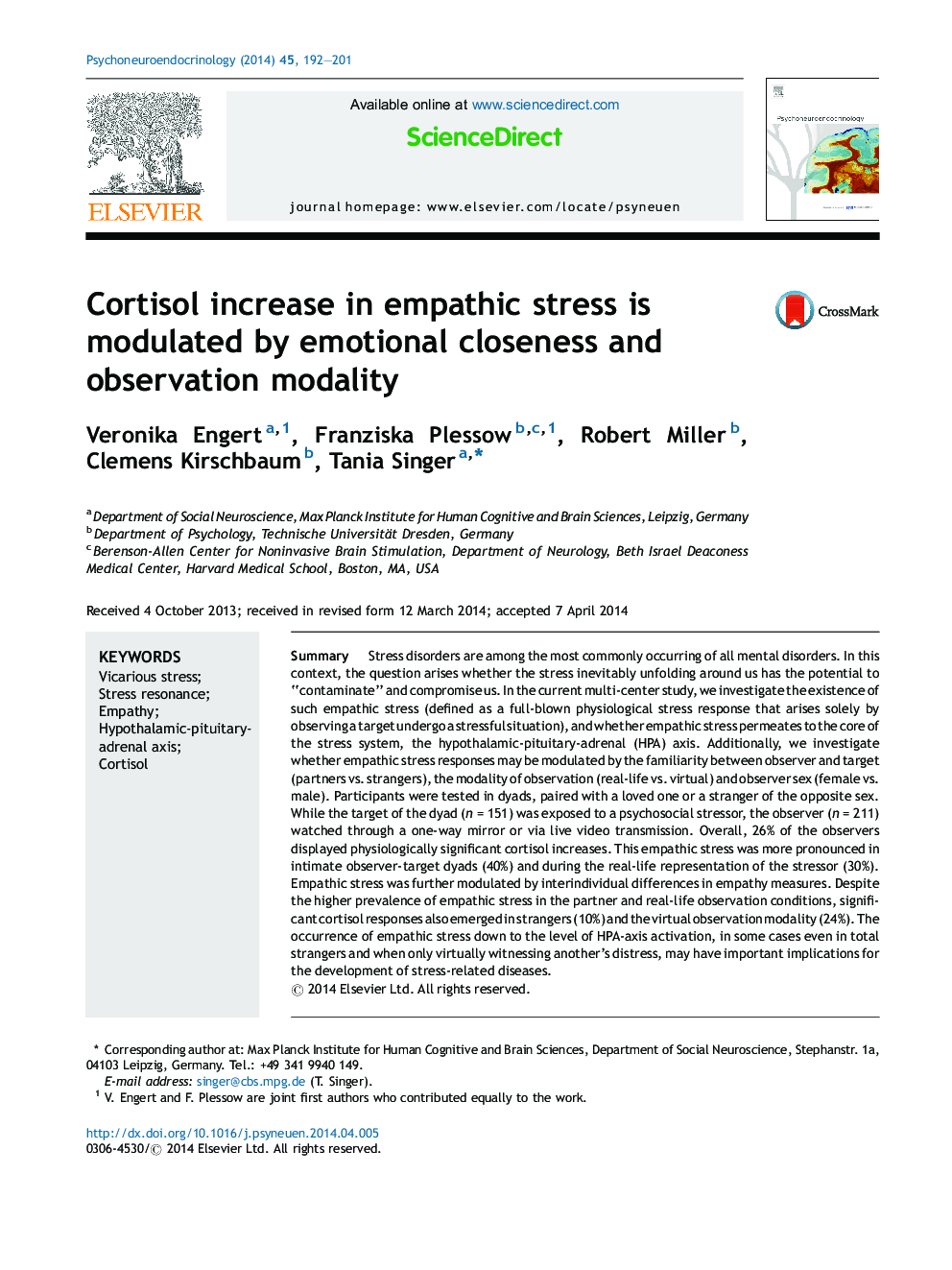| Article ID | Journal | Published Year | Pages | File Type |
|---|---|---|---|---|
| 336372 | Psychoneuroendocrinology | 2014 | 10 Pages |
SummaryStress disorders are among the most commonly occurring of all mental disorders. In this context, the question arises whether the stress inevitably unfolding around us has the potential to “contaminate” and compromise us. In the current multi-center study, we investigate the existence of such empathic stress (defined as a full-blown physiological stress response that arises solely by observing a target undergo a stressful situation), and whether empathic stress permeates to the core of the stress system, the hypothalamic-pituitary-adrenal (HPA) axis. Additionally, we investigate whether empathic stress responses may be modulated by the familiarity between observer and target (partners vs. strangers), the modality of observation (real-life vs. virtual) and observer sex (female vs. male). Participants were tested in dyads, paired with a loved one or a stranger of the opposite sex. While the target of the dyad (n = 151) was exposed to a psychosocial stressor, the observer (n = 211) watched through a one-way mirror or via live video transmission. Overall, 26% of the observers displayed physiologically significant cortisol increases. This empathic stress was more pronounced in intimate observer-target dyads (40%) and during the real-life representation of the stressor (30%). Empathic stress was further modulated by interindividual differences in empathy measures. Despite the higher prevalence of empathic stress in the partner and real-life observation conditions, significant cortisol responses also emerged in strangers (10%) and the virtual observation modality (24%). The occurrence of empathic stress down to the level of HPA-axis activation, in some cases even in total strangers and when only virtually witnessing another's distress, may have important implications for the development of stress-related diseases.
